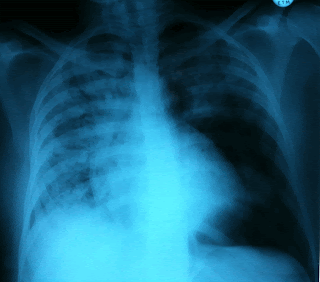 First off, I am safely on the ground (Mom). That said, Faye and I just returned from a Red Cross outreach to Vryheid, a small community in Northern South Africa located just below the border of Swaziland. Turns out that most rural-ish hospitals are run by house officers, who are physicians that have completed medical school, intern year, and community service - then they head to these community hospitals to work where they are THE doctor...pediatrics, general medicine, surgery, OB/GYN, you name it. So in order to improve care, the Red Cross in association with the government arranges for specialists (which includes internal medicine docs) to fly to these communities about once/month to work in the clinic and wards. This involves heading to the airport, jumping into a 9 seater (see pic), and taking off into the clouds with nothing more than a stethoscope, TB mask, and bottle of Purell. 1 hour and change later, we're deposited in a clinic and the steady flow of patients arrive for consults clutching their charts, CXRs, and prescription cards. Interestingly, since the house officers see so much AIDS and TB, they are relatively comfortable handling these cases, so the patients they have scheduled us to see were mostly cardiac (lots of heart failure, rheumatic heart disease, palpitations, uncontrolled hypertension), with a sprinkling of diabetes, hypothyroidism, and nephrotic syndrome. Often, the house officer had ordered some basic tests prior to our arrival, so quite frequently we were able to initiate lasix or titrate synthroid doses, but just as often, basic work up hadn't been done yet, and so we would have to send the patient away clutching a lab slip or ultrasound request with plans to follow up at next visit. Turns out there is quite a need for echos and basic cardiology education (atenolol for BP control, seriously?), which gives me a lot of interesting things to think about for future projects....
First off, I am safely on the ground (Mom). That said, Faye and I just returned from a Red Cross outreach to Vryheid, a small community in Northern South Africa located just below the border of Swaziland. Turns out that most rural-ish hospitals are run by house officers, who are physicians that have completed medical school, intern year, and community service - then they head to these community hospitals to work where they are THE doctor...pediatrics, general medicine, surgery, OB/GYN, you name it. So in order to improve care, the Red Cross in association with the government arranges for specialists (which includes internal medicine docs) to fly to these communities about once/month to work in the clinic and wards. This involves heading to the airport, jumping into a 9 seater (see pic), and taking off into the clouds with nothing more than a stethoscope, TB mask, and bottle of Purell. 1 hour and change later, we're deposited in a clinic and the steady flow of patients arrive for consults clutching their charts, CXRs, and prescription cards. Interestingly, since the house officers see so much AIDS and TB, they are relatively comfortable handling these cases, so the patients they have scheduled us to see were mostly cardiac (lots of heart failure, rheumatic heart disease, palpitations, uncontrolled hypertension), with a sprinkling of diabetes, hypothyroidism, and nephrotic syndrome. Often, the house officer had ordered some basic tests prior to our arrival, so quite frequently we were able to initiate lasix or titrate synthroid doses, but just as often, basic work up hadn't been done yet, and so we would have to send the patient away clutching a lab slip or ultrasound request with plans to follow up at next visit. Turns out there is quite a need for echos and basic cardiology education (atenolol for BP control, seriously?), which gives me a lot of interesting things to think about for future projects....-N












